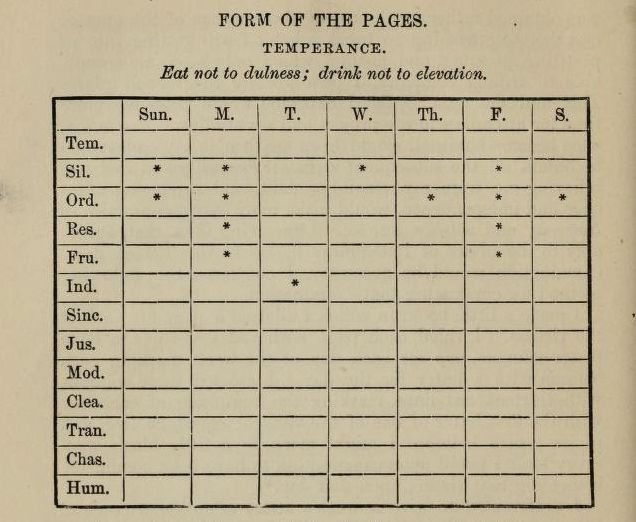While working with clients on managing their paperwork and filing systems, and/or time management/productivity we often come across very old (meaning over a year) TO DO lists.
Are YOU haunted by these? Know they are out there lurking to challenge and shame you? I AM!!!
Here are some thoughts to guide you as you contemplate your next move against these demons.
Option #1: Look at them
Pros:
Cons:
Option #2 Throw them out
Pros:
Cons:
My recommendation:
Take an hour or two off and, armed with a legal pad or journal, bring those lists to a coffee shop/library or other secret hideaway. Review them in a loving, self-accepting way. Jot down any thoughts that arise.
Then, like you would with the old tub of cream cheese that is festering in the back of the frig, growing green and black molds, TOSS the old to do lists out.
Onward to what calls to you NOW!

Was one of your resolutions for 2018 to get more organized? If so, you’re in good company. Getting organized is among the most popular New Year’s resolutions.
Even if you didn’t expressly resolve to get more organized, you may have done so without realizing it via your other resolutions. This is because organization is key to success with so many goals.
Say for example that you resolved to spend more time with family, or achieve a fitness goal, or tackle debt. Being more organized means that you can gain time to enjoy family. Fitness goals are more attainable when you have fewer barriers between you and your workout – if it’s hard to find those workout clothes, it’s that much easier to throw in the towel and not work out.
If your goals are financial, an organized mail and paper management system can be like found money. You can pay down debt instead of paying late fees after you finally come across that overdue bill. Organization really is crucial to achieving most goals.
Resolutions are easy to make and all too easy to break. New Year’s resolution expert John Norcross found that 25% of us don’t stick with our New Year’s resolutions past the first week. If you are still on track with your New Year’s resolution, kudos! If not, now is the perfect time to reset.
Resetting your resolution may be as simple as breaking it down into small steps. Have you written down your resolution? If not, try that. People who write down their goals have been found to accomplish significantly more than people who don’t. It may be a matter of reworking your resolution so that it’s S.M.A.R.T. (Specific, Measurable, Achievable, and Relevant / Realistic, and Time-bound).
Change that involves organization can be hard for the best of us no matter what strategies we try. If this sounds like it applies to you, you’re still in good company.  Consider that Benjamin Franklin made a chart of 13 “virtues” to which he aspired. Order was the one he struggled most with, according to the chart he included in his Autobiography. He would put a mark on those days when he did not achieve the virtue, and there are more marks for order than for any other virtue.
Consider that Benjamin Franklin made a chart of 13 “virtues” to which he aspired. Order was the one he struggled most with, according to the chart he included in his Autobiography. He would put a mark on those days when he did not achieve the virtue, and there are more marks for order than for any other virtue.
If you can relate to Franklin’s struggles, consider an option that didn’t exist in Franklin’s day: hire a professional organizer!
The holidays are upon us! There’s so much to keep track of and so many things to do! How can this wonderfully busy time of year feel less stressful? Make a list! Or several!
I love lists! Just the act of writing a list helps me to feel like I have a clearer direction. A checklist is a concrete tool to help you empty your brain of all the things you need to remember…and then to prioritize them.
There are even more things to do and to remember than usual. I use different lists for each facet of the holidays.
If you like writing lists out on paper, keep one folder or notebook as a central location to record your plans. If you prefer going paperless, keeping documents stored on a computer or in a note-keeping system like Evernote is a convenient way to keep an ongoing record over the years.
The following are types of lists to help you stay better ordered as the activities and tasks fill your schedule:
Menus: Write out a list of the entire meal from appetizers through desserts, including those items being provided by other guests. That way, you have a comprehensive overview of the full meal and can fill in the gaps if there are any. Don’t forget to include drinks, paper products, flowers and table centerpieces.
Shopping list: Go through all the recipes you will be preparing and write out every ingredient into a grocery list. The key here is to write the food items according to sections in the grocery store. It helps dramatically when your list is ordered so you don’t have to revisit different sections of the crowded store.
Tasks: Write out all individual tasks required to prepare for the holidays so you can clearly see the extra demands on your time such as: cleaning the house, decorating, shopping for gifts, wrapping, and mailing gifts (by a designated date).
Holiday cards: Keep a master address list that you can update each year. Many people keep it in a format on their computer to print address labels. I like to sort names according to groups: family, friends, neighbors, co-workers, etc.
Gifts: Keep a list of all gifts you plan to purchase according to each person. In the margin, record the store or online vendor and price. You can plan your shopping route according to the stores listed.
Accessory shopping: While shopping for gifts, there are often other details easily overlooked. Designate a master list for details. For example, as you decorate your house or plan your holiday party, keep one list for all those particulars such as a replacement string of lights, a new set of holiday placemats, etc.
A Final Step
Your Calendar: Look through your lists regularly and write tasks into dates on your calendar in order to keep track of what is being accomplished. Write in your planner in pencil to make easy alterations or use an online calendar to easily move tasks around.
Remember: this is a busy time of year. Everything takes longer than expected. In the end, we may need to let go of a few tasks.
The ultimate goal is not to feel harried by the time the actual day arrives so you can enjoy the celebration with those you love!
My Evernote conversion occurred about five years ago. Stuffed in the back of my junk drawer (yes, I also have one) for several years, lay a handwritten recipe for the best maple balsamic salad dressing obtained from a restaurant in Vermont. Frustrated with my lack of organization for something so valuable, I downloaded Evernote and my life was forever changed.
I created a notebook in the Evernote app and titled it “Recipes,” took a photo of the recipe within the Evernote app et voila! Wherever I am, on my phone, tablet or laptop I have a screenshot of the recipe. I quickly saw how transformational this would be in both my personal and professional life. When a friend recommends a great restaurant, it goes into the notebook I created titled “Recommended Restaurants”. I also do this for movies, books, wine, travel destinations, decorating ideas. All those great details we scribble on the back of napkins never to find again.
If I’m surfing the web, I can use Evernote webclipper to clip an article or page and put it into the notebook of my choice. I can also dictate notes into Evernote and draw using the Skitch app.
I also have a notebook for each of my kids. I have a screenshot of their health insurance cards, health records, photos of their artwork from Kindergarten so I could get rid of those large poster-size monstrosities, er, I mean works of art. The list goes on.
For my business, I’m able to share notebooks with my team and with our clients. We often take notes during an organizing session and share these with our clients. Evernote also eliminates the need to email documents back and forth. Instead, the whole team can collaborate and has access whether they are working remotely or in the office to notes, documents, photos, etc.
I’m barely scratching the surface of Evernote’s endless possibilities. For more information and to create your free online account check out www.evernote.com
Purging is an often recommended and common sense first step to organizing. When we’re dealing with documents, most of us aren’t always sure what to toss, what to keep and for how long. Here are some guidelines to get you started on handling common types of documents. Your situation may be more complex, if, for instance, you have chronic health problems, or have a business. When in doubt, ask an accountant, attorney, daily money manager, or other trusted professional. When it comes to those documents that you should keep, consider that most of the documents can be scanned and the hard copies discarded.
TOSS
KEEP SHORT TERM
KEEP LONG TERM
KEEP PERMANENTLY
Trying to know everything about the Internet is as impossible as reading every book ever written. Like the spooky spider webs (real and synthetic) that accent our autumn décor, the fingers of the world-wide-web stretch and reach into sometimes unexpected corners of our lives. Schools, grocery stores, medical offices, places of employment and social groups – it is hard to find areas of life that are not touched. Yet, while technology races to manage our world, how well are we managing technology?
No matter where you find yourself in this digital age — ahead of the curve, just keeping up, or lagging behind — step away from the shivers you feel about getting caught in the web. Here are suggestions of some free tools and applications that I, myself, have found useful. They have helped me create order and ease in different areas of my daily life.
When You Shop: If you keep your cell phone with you, use it to store your shopping lists. Simply take a picture of your refrigerator grocery list before leaving the house or have a family member text you a picture of it when you’re at the grocery store. Create your list in an “app” such as Remember The Milk. And toss all those plastic loyalty and club cards. Use an app called Key Ring and they will always be with you when you need them.
Appointment Management: Phone calendars are wonderful for helping keep track of appointments and deadlines. They even offer the ability to set alarms. Go a step further and set up a shared calendar for your family in Google so you can know who needs to be where and when.
Travel Help: Have you ever been traveling and needed to find a gas station, restaurant or restroom? Don’t want to end up in a less than desirable location? Use the Yelp app to find something local and reviewed by others. Want to catch a movie on the fly? Try the Flixster app to find what’s playing now in your current location.
Files at Your Fingertips: Whether used for business or not, this can be more handy than you might think. Try creating a medical file in Evernote or Dropbox with snapshots of test results, medications and procedures. Bring an iPad or tablet to your doctor appointments and pull them up so your doctors can scroll through them easily. Similarly agendas, contact lists, and meeting notes for your association or social club meetings can be saved online. Even if you prefer bringing printed copies, storing them in Google Drive is a great backup plan. If you get into a bind and are caught without the printouts, you can log in to your Google account and access the notes on your phone or tablet without having to stop home.
I challenge you to choose one new techno-solution this month and see if it can help you streamline an aspect of your life. Don’t wriggle helplessly in a web constructed by someone else. Use technology to create your own web of control and order. Replace your fear of the Internet by spinning a web of your own design.